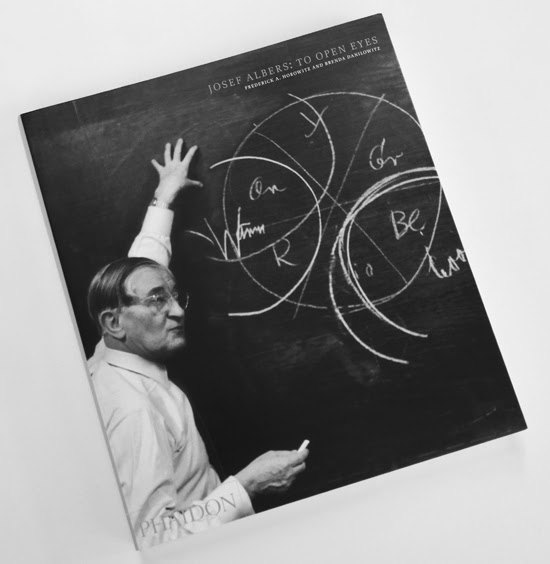Josef Albers : To Open Eyes
I just finished reading a biography of the artist and educator Josef Albers.
Many people know Albers as a specialist in color theory, the author of the seminal text “The Interaction of Colors”.
But his biography, “Josef Albers: To Open Eyes” written by the chief curator of the Josef and Anni Albers Foundation (Brenda Danilowitz) and one of Albers's former students at Yale Art School (Frederick Horowitz), adds both context and interest.
Albers's empirical study of color explained how colors, when adjacent to each other, interact to create perceptions of ‘more than is there’.
Activating this kind of thinking in art is characteristic of Albers, but remembering him as a theorist is not. His biographers make it clear that in the classroom, Albers put practice before theory.
The book starts out by tracing Albers' artistic development from small-town Westphalia, to the Bauhaus, to Black Mountain College, and finally to Yale Art School.
Throughout his journey, Albers was always an artist (printmaker, designer, painter, photographer) but over time Albers-the-educator emerged equally strong.
As a professor, Albers created a tireless stream of ideas for in-class experiments, methods and studies.
He would ask students to draw the spaces between objects, and watch as the objects would emerge from negative space as figures on a ground.
He would ask students to study the 'inner energy' of materials by bending/shaping them into sculptural forms that reveal their character for both the shaper and the observer.
He would ask students to re-order the parts of a paper model through exercises that would reveal gestaltist relationships between the parts and the whole.
His bias for active learning, what he called “study, not art”, clicks back all the way to his earliest days at the Bauhaus.
Albers was the embodiment of both the established and the new in the art world.
He kept old ways in use by studying craft, by believing art should be revelatory, by teaching classes wearing a shirt and tie.
But he was open to the new by working in experimental media, saying silly things like “let’s cook a new pancake”, and wearing clear-framed glasses that anticipated creative types of later generations.
In the background, his marriage to Anni Albers, who was a successful textile artist in her own right, plays out and serves them both well.
And so too, his influence on his now-famous students like Ruth Asawa, Robert Rauschenberg and Richard Serra who carried their lessons forward for new audiences in new times.
One last thing. There is a little story behind “To Open Eyes”, a fragment of the book’s title. It is the answer Albers gave when he was asked what he wanted to teach his art students.
Through Danilowitz and Horowitz’s biography, it looks like he continues to achieve his goal.
https://www.phaidon.com/store/art/josef-albers-to-open-eyes-9780714849652/







